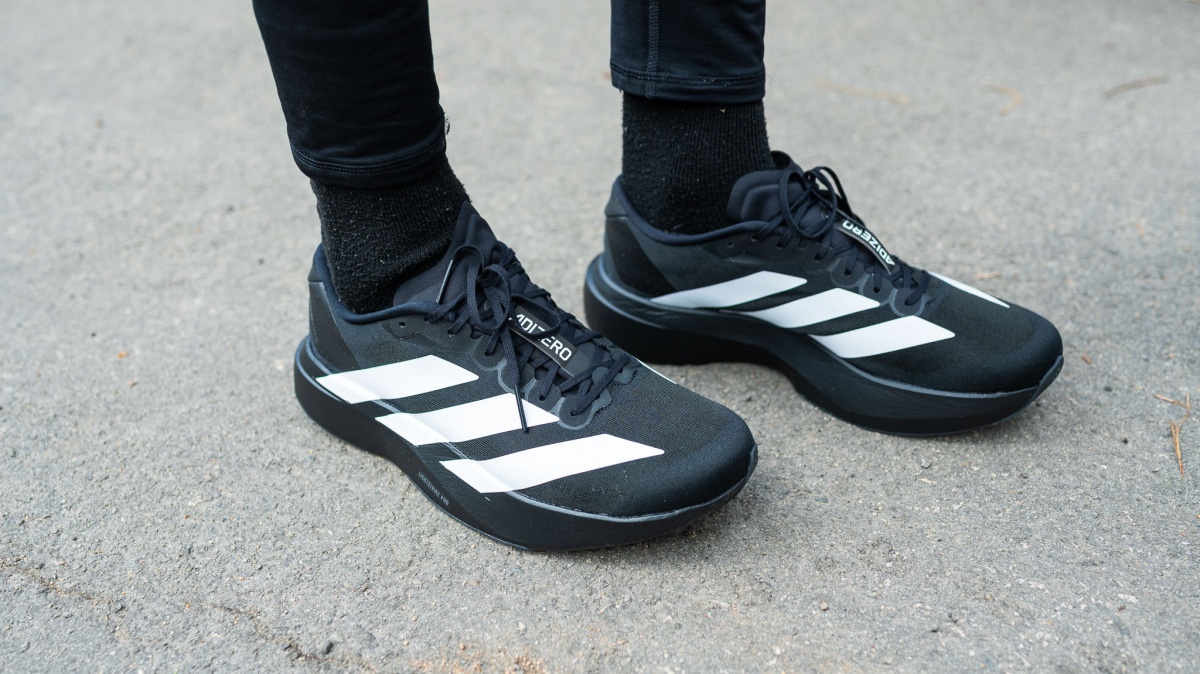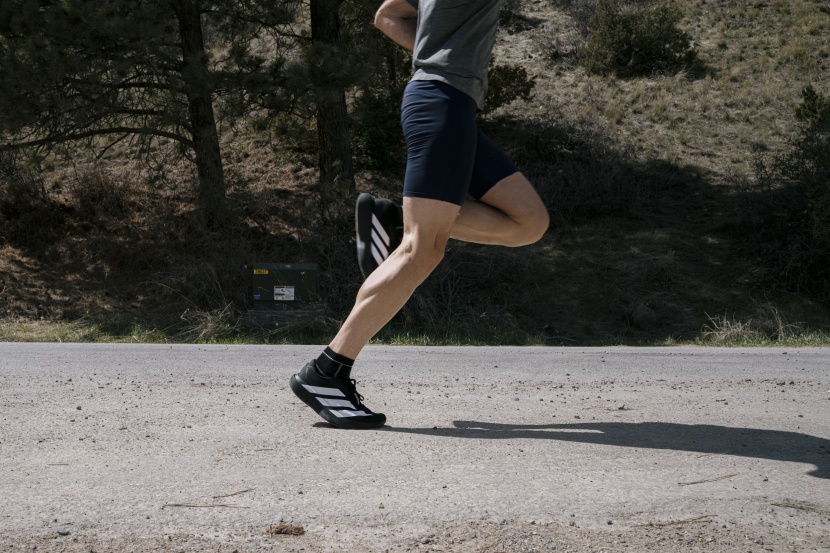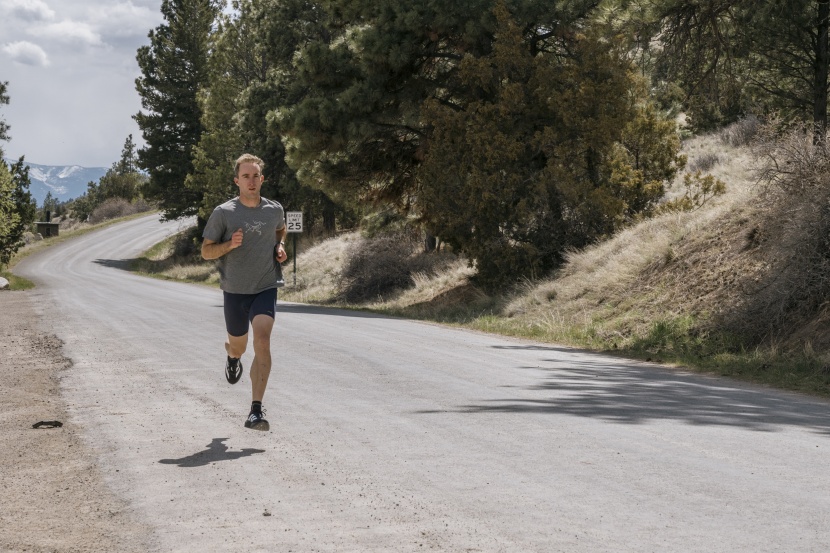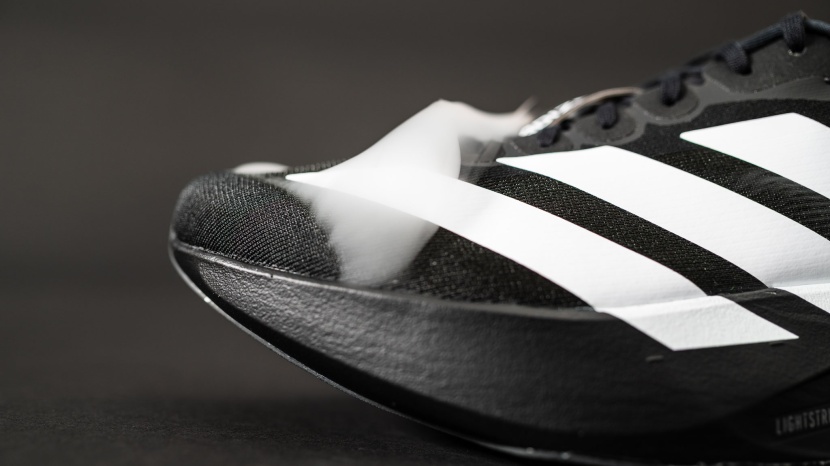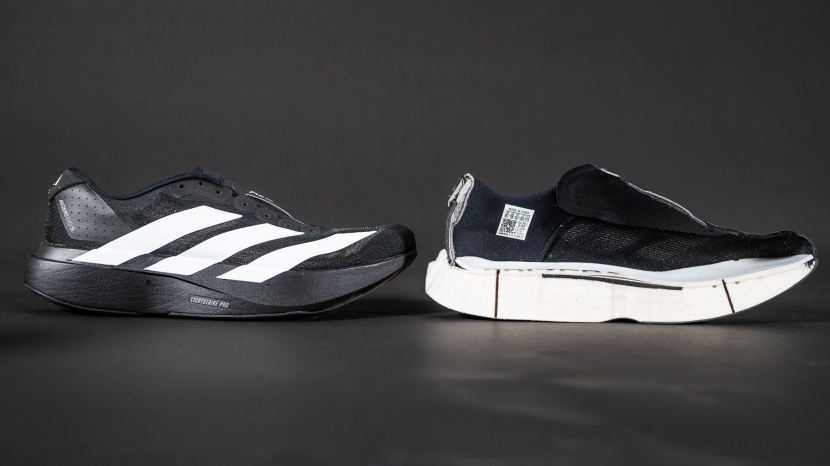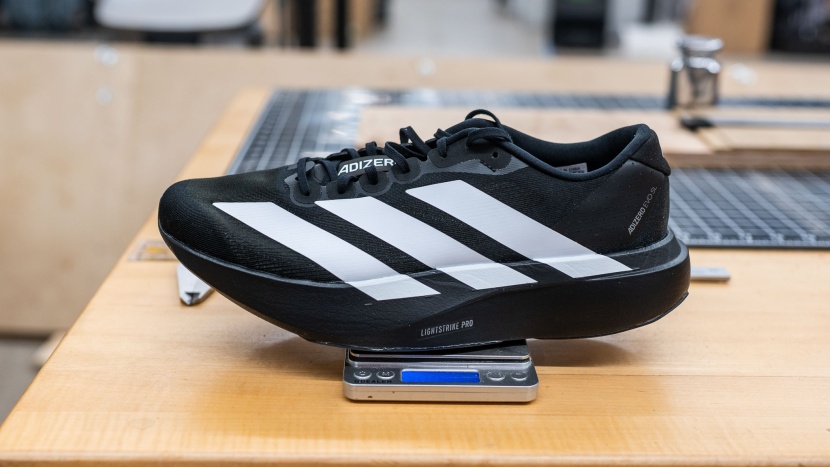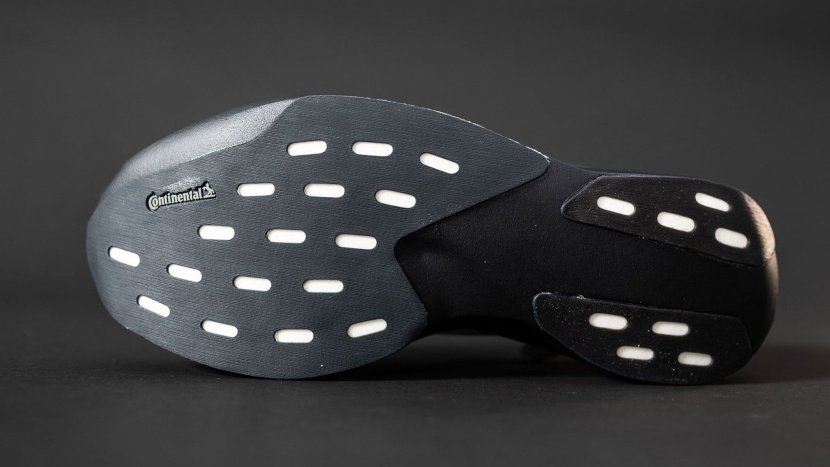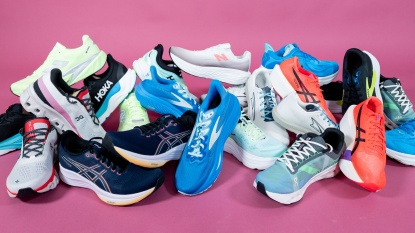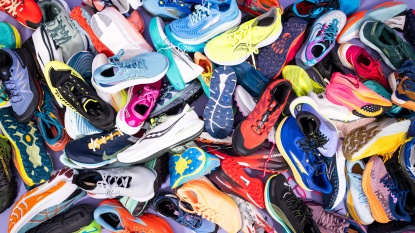
Our Verdict
Our Analysis and Test Results
The Evo SL utilizes Lightstrike Pro foam and a gentle rocker geometry, making it one of the best daily trainers we've ever tested.
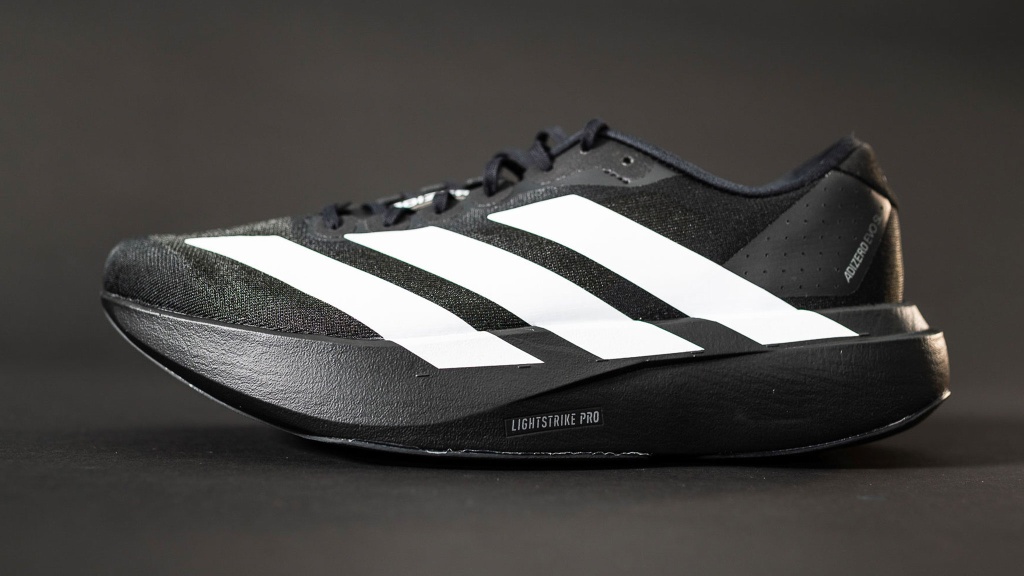
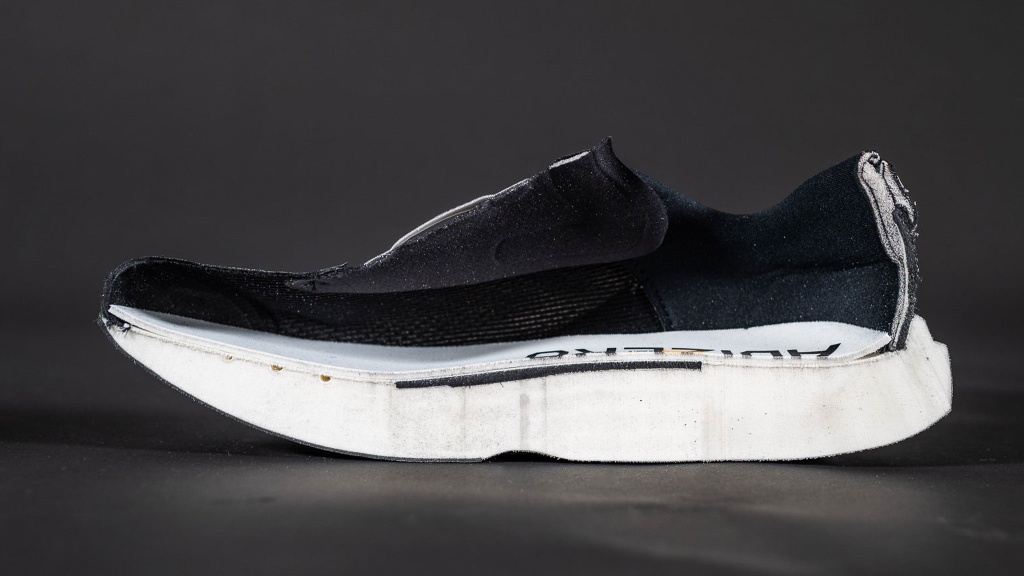
Cushioning
Adidas' Lightstrike Pro midsole foam makes this shoe. We measured 39 mm of foam at the heel, with a 9 mm drop at the toe. The midsole is one of the most enjoyable of any daily trainer we've tested. That's primarily due to the happy medium it strikes that is neither too soft nor too firm.
The foam compresses well on landing and has a pleasant bounce with solid energy return. That's consistent with our experience with Lightstrike Pro in other shoes. The foam is extremely resilient, but it has enough firmness to provide some structure. Compared to other foams, the Lightstrike Pro tends to result in a more controlled and stable ride that feels better both more stable during a jog, and more immediately responsive when sprinting.
The Evo SL utilizes a smooth, early midfoot rocker that isn't extremely aggressive. This pairs well with the shoe's versatile nature. The rocker allows for a natural landing at easy paces and promotes turnover as the pace starts to heat up. Runners who don't like a rockered ride may find they don't enjoy this shoe as much.
The cushioning of the Evo SL feels best at moderate paces, up to around threshold effort. In that range, putting enough force into the shoe creates a very enjoyable bounce. At slower paces, the shoe is still very comfortable, but it is a little less engaging. That said, this shoe thrives on longer, progressive efforts. It's well-cushioned and highly protective at easier paces, and has enough bounce to feel good as you start to squeeze down the pace.
The Evo SL is a plateless shoe that doesn't have the nylon or carbon plate typically found in highly versatile daily trainers. Instead, there is a small plastic shank right under the arch that provides just enough support to stabilize the midsole foam without significantly increasing the longitudinal stiffness of the shoe. Compared to its competitors, the Evo SL feels more flexible and a little less restrictive as a result, which plays a big role in its comfort at relaxed speeds.
Upper Comfort
The Evo SL upper is solid, but not perfect. There is plenty of space for runners with wider feet (not always the case with Adidas shoes), and it can also be snugged up to fit narrower feet. We didn't experience any blistering or rubbing during testing. Our primary tester's foot tends to be about average width, although the outside of his midfoot occasionally feels squeezed in narrower shoes. The heel cup is generously shaped and provides solid lockdown without being overly rigid. Similarly, the upper is highly breathable and lightweight, perfect for an uptempo shoe.
Unfortunately, the lacing system on the Evo SL isn't quite perfect. It is relatively easy to under-tighten the midfoot in these shoes. We found our feet slipping forward in the shoe during the first mile of a few runs early in testing. Stopping to tighten the midfoot section solved that issue, but finding the right Goldilocks fit can take some finagling and adjustments. Overall, this is a well-executed upper for a daily trainer, providing plenty of comfort for long runs and a low weight for faster running.
Stability
The Lightstrike Pro midsole foam is more stable-feeling than some competitors. That's part of what makes the Evo SL a phenomenal daily trainer. However, it is not a particularly stable shoe compared to its key competitors. If you're a runner who values support and stability over responsiveness and performance, this likely isn't the shoe for you.
Shoes with similar stack heights typically utilize a wider platform, sidewalls, or midsole geometry to provide some support, but the Evo SL does not. This shoe is very neutral, and provides little-to-no guidance outside the heel bevel.
For lateral stability, this shoe is similar to others with the same stack height, and the probability of rolling an ankle is about equal. For most runners, it should work fine. You will likely prefer a different trainer if you value stability and support.
Responsiveness
Responsiveness is what sets the Evo SL apart from its competitors. It's not the most responsive shoe, but it's among the higher performers, and it doesn't sacrifice nearly as much easy-run comfort to be responsive as other options. The Lightstrike Pro midsole is once again to thank here. It provides a smooth ride combined with the early rocker, which starts at the midfoot (we measured its start at 52% of overall shoe length). The ride is protective and insulating at slower paces, but as the pace heats up and more force goes through the foam, the high energy-return becomes more apparent. Bounce increases, and the rocker feels a little more propulsive.
This shoe thrived during moderate efforts. At slower-than-marathon but faster-than-easy paces, everything about the shoe feels like it is smoothly contributing to your run. The shoe is very comfortable with easy efforts, but the rocker encourages you to pick up the pace. It's often hard to hold back. And during hard efforts, the Evo SL works, but it doesn't have quite the punch of a super shoe, or more dedicated speed trainers.
The Evo SL isn't our first choice for hard workouts, but it gets the job done. For runners who want a shoe that can handle anything, it's about perfect. Thanks to the blend of comfort and responsiveness, this could be a great race-day shoe for many. It has worked its way into our non-testing day-to-day rotation for long runs with faster portions and warm-up runs before hard sessions, often including a few minutes of moderate threshold paces.
Weight
The Evo SL weighs 8.73 ounces in a US Men's 10.5, which is significantly lighter than average for a daily trainer.
The low weight is a standout feature that plays a significant role in this shoe's versatility. It's very well-cushioned, but there isn't much weight penalty for all that foam.
Traction
Continental rubber outsoles (yes, like the tires) on Adidas trainers are consistently among the best-performing outsoles, and the one on the Evo SL is no exception. It's tacky and abrasive enough to grab on cold and wet or icy roads, and still manages to provide decent bite on gravel.
We ran on surfaces ranging from hot concrete and ice-covered asphalt to loose gravel and had no issues. The lack of lugs may pose an issue for runners who regularly tackle chunky or greasy dirt roads. Otherwise, this outsole simply works.
Should You Buy the Adidas Adizero Evo SL?
If you want a versatile shoe, enjoy faster runs, or love an engaging shoe, the Evo SL is a phenomenal choice. The lack of a plate also makes it an excellent option for runners who aren't interested in training or racing in a plated shoe. It's one of the most versatile daily trainers we've tested, so much so that we think the Evo SL could be a one-shoe rotation option for many runners. It's just too fun to squeeze the pace in this shoe! Overall, we think this shoe is a great fit for runners who are chasing specific goals and training consistently, as long as they don't need significant support or stability. Plus, this shoe is significantly cheaper than its competition.
What Other Running Shoes Should You Consider?
If you are looking for a versatile daily trainer that thrives during uptempo efforts, there are a few other great options. The New Balance Rebel v5 is a similar plateless option, but it isn't as versatile or durable. The Asics Superblast 2 is a phenomenal, versatile trainer, although it is more geared towards comfort and stability (and costs $50 more). It's a better option for runners who prefer a larger, extremely protective shoe rather than a very lightweight and nimble shoe.


